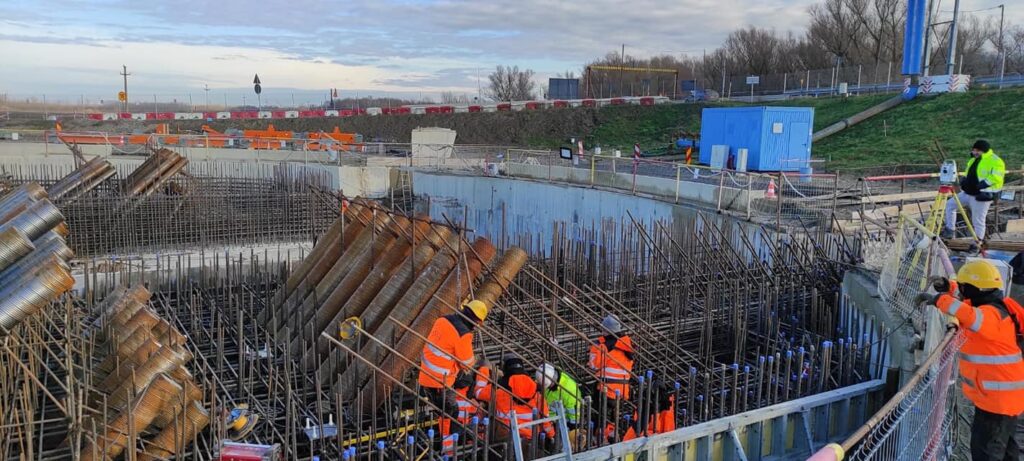The Romanian Government has promised a paradigm shift in its economic policy, seeking to make investment the engine of growth instead of consumption, Hungarian news portal maszol.ro reports. The government program covering the next four years calls for the construction of 1,000 kilometers of motorway, 13 hospitals, 1,450 rural health centers, schools, sports arenas and swimming pools, as well as the modernization of a couple hundred kilometers of railway tracks. However, there is one major issue: The Romanian construction industry is not ready to implement such investments, as it has faced a huge labor shortage for years.
The government regularly emphasizes that this flood of investments will be financed mainly from EU funds, but they never really talk about the logistics and technical side of these projects. The planning of such investments should be based on the existing construction capacity of a given county, which cannot be increased drastically in a short amount of time, especially in Romania, as its construction industry has been facing a huge labor shortage.
“To implement the already announced short- and medium-term plans, the country needs an additional 350,000 workers to supplement the existing ones. This means double the current manpower, so it would be really important to get our skilled workers currently working abroad to come back home,” Radu Pițurlea, the vice-president of the Concelex construction company told maszol.ro.

Cristian Erbașu, the owner of one of Romania’s largest construction companies and the president of the Employers’ Federation of Building Companies (FPSC), also thinks that more than 300,000 workers are needed to implement all the plans. “A lot of investments have been announced, but the question is, what is the priority? There is no consistency, especially now, right in the middle of the epidemic. […] The lack of skilled workers represents the greatest problem. People want to start working, but then we realize on the construction sites that they have no idea how to do their jobs,” Cristian Erbașu told maszol.ro.
“If all the announced investments are started and the funding is resolved, these people will be needed. But what we want is one thing, while the reality is something different. If we want to attract young workers into this industry, we need competitive salaries; we cannot pay these 300,000 new workers the minimum wage,” Laurențiu Plosceanu, the president of Romanian Association of Construction Entrepreneurs (ARACO), told maszol.ro.
The government introduced a very important measure in 2018 to make the construction industry more attractive to young workers: It exempted construction employers from paying social taxes and reduced the social contribution of employees to 3.75 percent. The government decree also increased the minimum wage in the industry to RON 3,000 (EUR 615), RON 700 more than the national minimum wage. The measure had some effect: From 2018 to 2019, the number of construction workers grew from 342,000 to 375,000.

Peak manpower for the sector was registered in 2008, when 558,000 people worked in construction. However, due to the economic crisis, a year later, the number dropped by 100,000, to 448,000. The decrease continued in the following years as well: In 2010, there were only 390,000 workers, and now in 2021, the number of construction workers is 20 percent lower than it was during the last crisis, around 300,000. On the other hand, even though the number of workers decreased, 2020 was a good year for the construction industry, which grew by 15 percent. And yet, during the pandemic, from March 15, 2020, until the end of October, 226,000 labor contracts were terminated, while only 154,000 new contracts of employment were signed, meaning that more than 70,000 construction workers lost their jobs last year.
But it’s not just the lack of workers — funding also poses a challenge to making these new investments: The members of the Romanian Government and the PM very often mention the EUR 80 billion available to Romania via EU funds, which could cover the investments. However, a part of this amount cannot be used to pay for these types of projects, maszol.ro points out. And even if Romania could use the full amount to finance the investments, the country has a horrible track record for absorbing EU funds. According to the latest announcement of the Minister for EU Funds, Marcel Boloș, Romania reached a 38.9 percent absorption rate in 2020, much higher compared to the 25.2 percent in 2018 but still very low compared to other EU members. Absorption efficiency is expected to improve in the coming years, but no one can expect miracles, maszol.ro stresses.
Title image: Romania needs double the number of construction workers it currently has to carry out all the planned investments. Photo: wall-street.ro